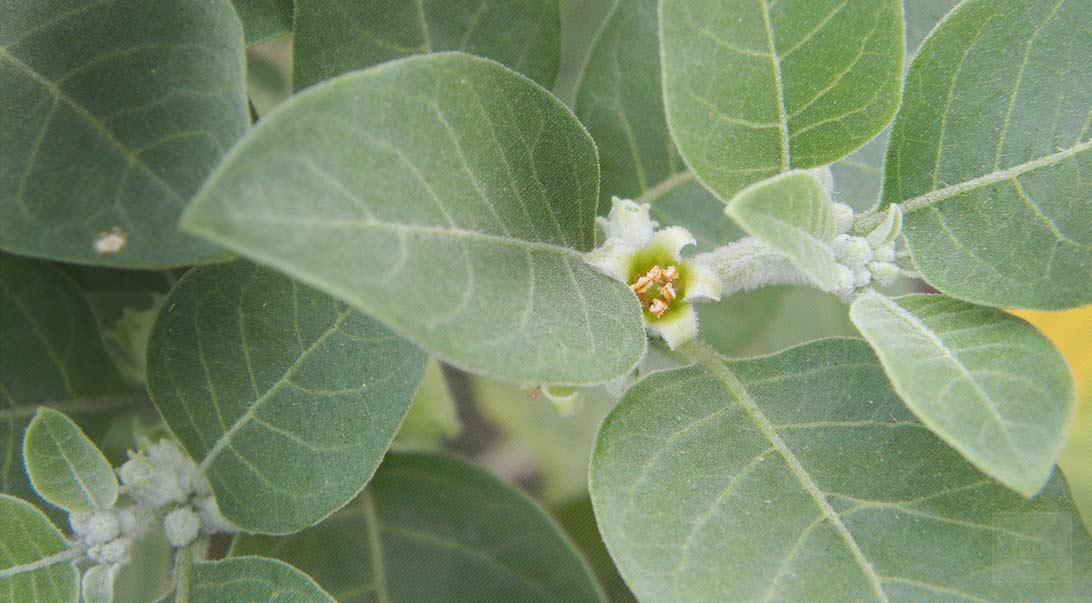The leaves of Ashwagandha has Antihelmintic, Anti-tumor, Anti-bacterial, Anti-inflammatory and Hepatoprotective activities. The leaves contain 12 withanolides, including withaferin which is antitumor, antiarthritic and antibacterial. Ashwagandha (Withania somnifera) is a very important plant of Ayurveda.

Overview
Its root is considered Indian Ginseng and used as tonic for reproductive system. Ashwagandha root powder is used in the treatment of a variety of diseases. The leaves of this plant are also of medicinal importance. These are used in variety of diseases. Anti-inflammatory activity of leaves is due to biologically active steroids, of which withaferin A is a major component.
Vernacular names of Ashwagandha
Ayurvedic name: Ashwagandhaa, Ashwakanda, Gandharvagandhaa, Turaga, Turagagandhaa, Vaajigandhaa
Unani: Asgandh, Siddha: Amukkuramkizhangu, English: Winter Cherry, Taxonomical classification
Kingdom: Plantae, Subkingdom: Tracheobionta, Vascular plants, Super division: Spermatophyta, Seed plants
Division: Angiosperma, Class: Dicotyledons , Order: Tubiflorae , Family: Solanaceae, Genus: Withania, Species: somnifera Dunal
Medicinal Uses of Ashwagandha leaves
Tumours, tuberculous gland
- Externally apply leaves paste on the affected areas.
Swelling, Inflammation, Boils
- Take fresh Ashwagandha leaves. Wash to remove dirt and crush it. Make a paste and apply on the affected body part.
- Carbuncle (is a condition of severe abscess or multiple boil/blisters in the skin, typically infected with staphylococcus bacteria) and similar skin condition
- Take few fresh leaves of Ashwagandha. Apply castor oil on these and warm them on flame. Apply on the affected areas.
Conjunctivitis
- Carefully wash fresh Ashwagandha leaves. Crush in mortar and pestle to extract juice. Put few drops in eyes. Make sure leaves are clean and juice extracted in not contaminated.
Sore eyes and swollen hands and feet
- Apply fomentation of the leaves.
Fever
- Soak few leaves in water and use as drinking water.
Blood purification
- Make infusion of Ashwagandha leaves and drink it.
This essay on the Ayurvedic uses for ashwagandha leaves was interesting and educational to me. The author gives a thorough description of the numerous therapeutic characteristics and health advantages connected with Ashwagandha leaves. It’s exciting to discover its conventional usage in Ayurvedic treatment, including its conceivable impacts on lowering stress levels, boosting the immune system, and enhancing general well-being. The article offers helpful advice on incorporating ashwagandha into a daily routine as well as information on the various ways that the leaves can be ingested. I value the information’s clear and succinct presentation, which makes it simple to understand. For individuals looking to learn more about the possible health advantages of Ashwagandha leaves, this article is an invaluable resource. Thank you to the author for sharing this insightful piece on Ayurvedic medicine!